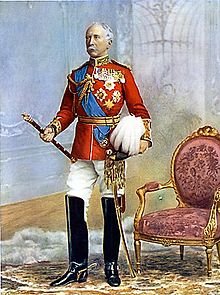By Mike Nickerson
How are you for grenades? They are a handy little item in any insurgency, and we have ‘em all. We got fragmentary, incendiary, stun, smoke, and this week only a crazy deal on some anti-tank grenades that I guarantee you’ll regret not snapping up while they last. Speaking of which, I have some customers in Denmark rather eager to buy so I wouldn’t waste time. I mean seriously, how long can you really count on not having to get all asymmetrical while some crazed dictator keeps making threats on your person? Not too damn long if you ask me, so I recommend our special Guerilla War Package before things get too crazy. I’ll even throw in a free set of Ginsu steak knives with each order, so whaddya say?
Now I’m not here to suggest that Canadians are, as a group, stocking up on munitions over fear that the United States is about to annex us on its way to Greenland. But don’t be surprised to hear of an uptick in ammunition sales in the coming months. It’s surprising how tub-thumpy many have gotten since the stream of consciousness that is Donald Trump started musing about Canada becoming the 51st state. You have academics arguing in all seriousness, that the US will never win, because we’ll fight to the bitter end, dragging the US down with us like some modern day Viet Cong. The punditry is calling for a faster rearmament, a patriotic recruitment drive, and a general ‘all hands on deck’ mentality in the face of such a brazen threat to our sovereignty. My God, Chrystia Freeland has suddenly become a war hawk, wanting us to reach NATO spending commitments by 2027! Whether that’s the old two percent commitment or the new five percent one that Trump recently mused about isn’t clear, in part because it’s not really clear to NATO. But for now, spend spend spend!
It’s true that Canada’s investment in its military has been woeful for decades, and it’s awfully tempting to just sit back and let this patriotic wave jumpstart a renewed focus and appreciation of how vital a well-armed and staffed military is. However, it is a well-known fact that making choices while in a state of hysteria over imminent invasion tends to lead to stupid decisions. In the case of ramping up our military spending by fifty percent in two years, one has to ask what exactly we would be spending it on.
Consider that in the first month of office alone, Trump and his cadre of sycophants have both argued for absurd NATO spending targets that the US doesn’t even meet, and weakened America’s commitment to the alliance. So when someone like Freeland goes all warmonger calling for accelerated military spending the question is how exactly? Should we be arming ourselves to be a good little NATO ally like we planned, or given that Trump seems likely as not to abandon the alliance should we instead pivot our military focus to align with the US, namely on all things China? Perhaps we should stock up on grenades and prepare for the inevitable invasion!
Well at the risk of being rational: none of the above. For while I’m loathe to suggest a pause in procurement, the fact is that the Trump administration has laid bare for all to see that for the next four years at least the United States is no friend of us or our European allies. And that requires some deliberation and reassessment, not just on what to buy, but from whom, and how that spending might be used as a bargaining chip in our current trade war.
We also need to consider our diplomatic options before we lock and load. One suggestion, as outlined by the CBC’s Murray Brewster, would be to invoke Article Four of the NATO charter. Simply put it commits members of NATO to "consult together whenever, in the opinion of any of them, the territorial integrity, political independence or security of any of the parties is threatened." Repeatedly musing about Canadian statehood might just qualify as a threat to our “political independence.” Why not formally discuss it?
Regardless, Trump has put the state of the world in flux, waiting on his every utterance. He’d like nothing more than to have everyone: us, Europe, the Middle East, running about like headless chickens. And while the cry of “The Americans Are Coming” may stir our patriotic hearts, the fact is they aren’t storming our shores any time soon. So let’s take this one diplomatic crisis at a time, shall we?





















